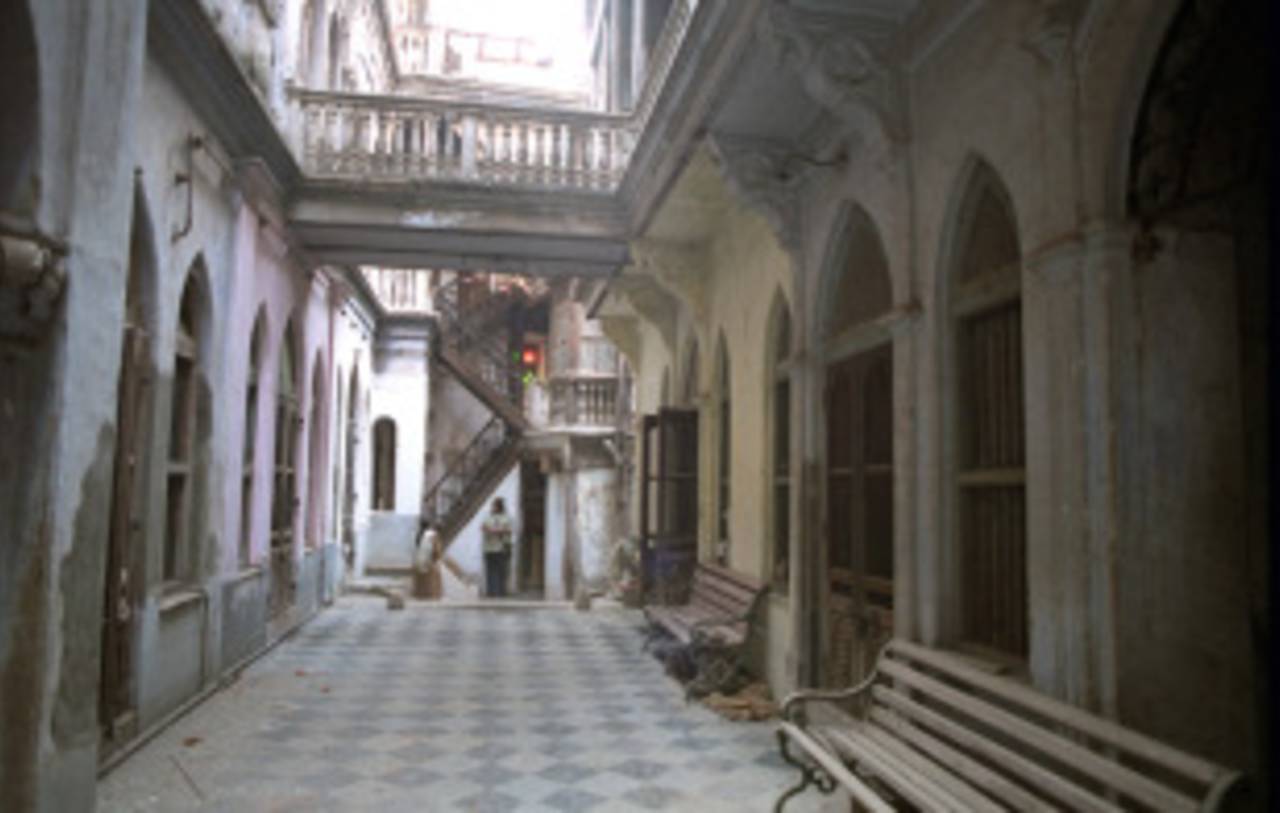Don't believe the bad press
Ahmedabad is short on alcohol and a visible colonial past but if you seek adventure, there's plenty of history, culture and cuisine to challenge you
Jayaditya Gupta
24-Nov-2010

An old haveli in Ahmedabad • Dinesh Shukla
Which city hosts India's premier business school? And its first, and still best, design institute? What spot did Mahatma Gandhi choose to assemble his followers at and run his campaign of non-violence from? Which city is spiritual home to a breed of traders, merchants and entrepreneurs who have found fame through the world for their cornershops, their motels, their work ethic? Where would you find a textile museum, a kite museum and one devoted to cooking utensils? Which other Indian city boasts grand traditional havelis (mansions), intricate pols - medieval inner-city ghettos - and the modern lines of Kahn, Le Corbusier and Buckminster Fuller?
Few cities on the cricket circuit get as much bad press as Ahmedabad does, yet have so much to offer. The city has been trashed for being dry - all of Gujarat state is under prohibition, though permits and bootleg alcohol are easily available - and dusty, boring, un-English. Scyld Berry unequivocally called it "without doubt the most unpopular venue on the whole international cricket circuit". Michael Henderson, writing after England's engagement here on their 2001-02 tour: "Rarely can a group of sportsmen have been so relieved to put a place behind them, a place of dirt, unrelieved boredom, inadequate facilities, no booze, and, in England's case, illness." More recently Paul Winslow of the Barmy Army said Ahmedabad had "little else to offer" other than cricket.
That, as Winslow's mates like to sing, is a load of rubbish. Fans of Australia, New Zealand and Zimbabwe could do far worse than include Ahmedabad on their World Cup tour.
The city's cricketing credentials are well-known: Kapil Dev's nine-for against West Indies in the very first Test at Motera, Gavaskar getting to 10,000 Test runs there four years later, and Kapil overtaking Richard Hadlee's 432 Test wickets in 1994. For the rest, all that's needed is an open mind.
Granted, Ahmedabad is different - very different - from the Raj landscape of Anglophile Kolkata, the urbane edge of Mumbai or the wide avenues of pampered Delhi. It is different from most other cities on the "tourist" trail; it lacks Jaipur's forts and the obvious, easy-on-the-eye sights and sounds of Goa and Kerala. Its chief minister and his government have presided over one of modern India's most shameful, horrific pogroms. But you can find no better place to visit if you're prepared to get out of your comfort zone and forego the obviously familiar for an unusual, though certainly not unfriendly, culture.
Fifteen years ago I did exactly that. Fed up with the cloying familiarity of Kolkata, I took a leap of faith and took up a job offer in Ahmedabad, right across the Indian heartland, a 40-hour east-west journey on the fastest train. I had never been there, I knew as much about it as the average touring fan probably does, but I was seeking a challenge. And that's what I got.
For someone who grew up in the long shadows of the Raj, Gujarat was at first an alien country. Most specifically in the urban skyline: no more Victorian or Gothic or proto-Raj facades, the Ahmedabad I first saw was a cluster of nondescript high-rises, dusty roads with dusty fields populated by herds of donkeys. The English they spoke was shorn of the veneer of sophistication bred in us by 200 years of close proximity to colonialism; indeed, some of the copy I handled at the paper where I worked barely seemed to be in English at all.

The stark beauty of the Rann of Kutch•Associated Press
Yet slowly I saw the similarity with, first, my native east - in the sweetness, metaphorically, of the language, and in the sweetness, literally, of the food - and with the West, in the professionalism of my colleagues, in their time-management (time is money: in the six years I spent in Gujarat, not one day's work was missed on account of a general strike or political agitation, unlike the countless man-days lost in union-run Bengal). I saw a society that was inherently democratic, reflected in the universal suffix "bhai" or "ben" appended to all names, regardless of age, caste, creed. Reflected also, though it may sound odd given the long history of communal riots, in the common surnames - a Modi, a Patel, a Shah can be Hindu, Muslim, Parsi.
The average cricket fan can't absorb all that in a week; instead, he can explore Ahmedabad and its surroundings for a very different Indian experience. He can visit the Mahatma's Sabarmati Ashram; the Calico Museum (built into the riverside mansion of the city's top family, the Sarabhais, and housing, inter alia, a Mughal hunting tent). For a perspective of Indian history running counter to the Nehru-Gandhi school of thought, he can visit the Sardar Patel Memorial; he can shop for textiles in the warrens of the old bazaars or in the floodlit night-time market called Law Gardens; he can eat a simple vegetarian thali meal or one of fish and meat in the Old City. He can have the milk and ice-cream the city is famous for, and drink from any of the fruit-juice bars that dot the city. Or he can have a Big Mac and Coke.
Arrive in Ahmedabad with a couple of days to spare and you can see the 1000-year-old Sun Temple at Modhera, a couple of hours' drive north; farther away, and to the west, the Great Rann of Kutch has packs of flamingo and wildlife sanctuaries. Further still is Dholavira, one of the sites of the Indus Valley Civilisation, several millennia old.
That's enough about the attractions - packing in any more would put the cricket itself at grave risk!
Jayaditya Gupta is executive editor of ESPNcricinfo in India